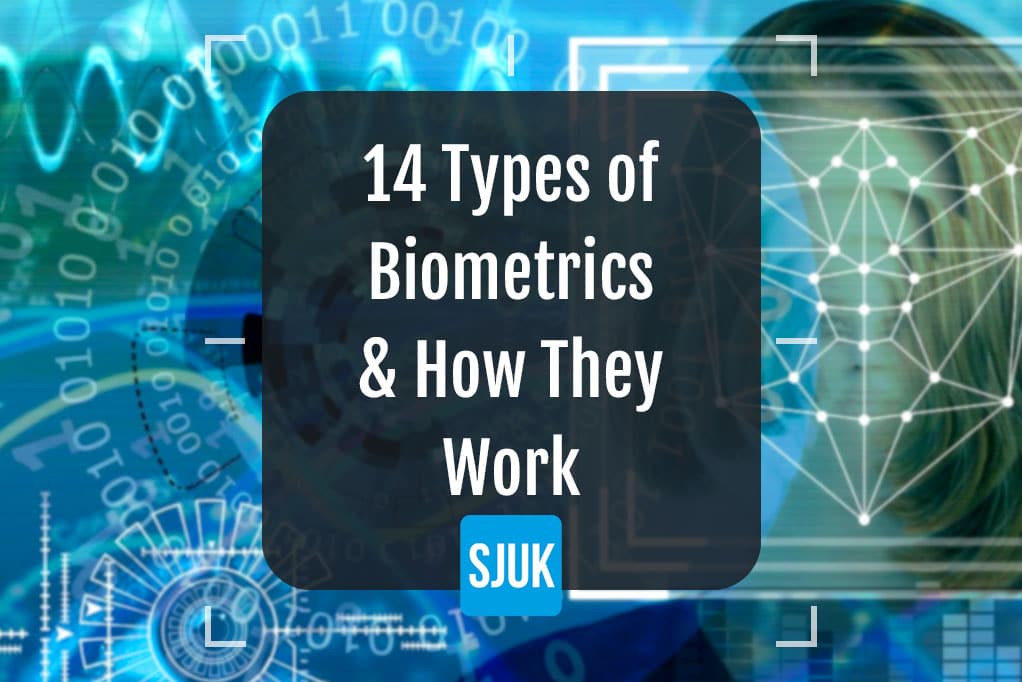
In our world full of computers and smartphones, we want to be sure that we are the ones using them.
That’s where biometrics comes in – it’s like a super special key that only fits us.
You see, our bodies have things that are unique to us, like our fingerprints or how our heart beats.
Biometrics uses these things to make sure we are who we say we are, and are now a common way of life.
Imagine you have a secret code that only your body knows.
When you touch a scanner, it checks your code to make sure it’s you.
This is what happens with biometrics.
It looks at the things that make you, well, you!
Like your fingerprints – those tiny lines on your fingers are like your own secret password.
Or your heartbeat – just like a rhythm only you have.
This article is like a tour guide through the many types of biometrics.
We’ll show you 14 different ways our bodies can be used as keys.
From your eyes to your voice, each part has a special job to do.
We’ll even tell you how it all works, and why it’s important to keep things safe when we’re online.
With the use of biometric authentication to rapidly increase by 2025, it is now more important than ever to have a working understanding on these technologies.
So, get ready to unlock the mystery of different types of biometrics and learn how these cool secret codes keep our digital world secure!
Table of Contents
ToggleBiometrics are distinct individual traits used to identify and verify a person’s identity.
Unlike passwords or PINs, which can be easily forgotten or compromised, biometrics offer a more robust means of authentication.
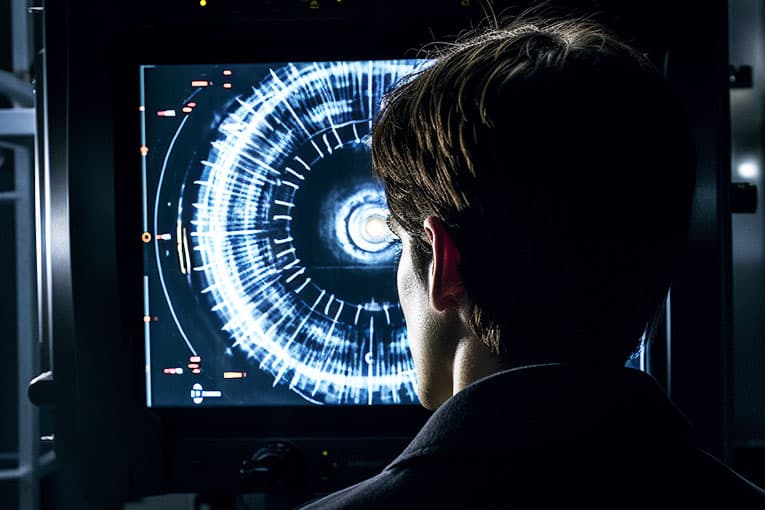
By relying on traits unique to each individual, different types of biometrics provide a highly secure way to ensure that the right person is accessing sensitive information.
Physical biometrics focus on an individual’s distinct physiological traits for identification purposes.
Let’s explore some of these remarkable methods:
Fingerprint scanners are one of the most commonly used biometrics, with over 1.5 billion fingerprint scanners being produced since 2014.
Fingerprint biometrics work by harnessing the unique patterns found in the ridges and valleys of a person’s fingertips to verify their identity.
This process involves several key steps that enable accurate and secure authentication.
Firstly, a fingerprint scanner is used to capture an image of the individual’s fingertip.
This device employs optical sensors to detect the distinct ridges and valleys on the fingertip’s surface.
These sensors create a digital representation of the fingerprint pattern.
Once the image is captured, specialised algorithms come into play.
These algorithms analyse the minutiae points, which are the specific ridge endings, bifurcations, and other unique characteristics of the fingerprint.
These minutiae points are used to create a mathematical template that represents the fingerprint’s pattern.
This template is not a direct copy of the fingerprint image; rather, it’s a compact and secure representation that retains only the necessary information for comparison.
This is an important security feature to protect users’ biometric data.
The generated template is then stored in a secure database or on the device itself.
Whenever the individual needs to authenticate their identity, the scanning device captures a new image of their fingerprint and creates a template from it.
This new template is then compared to the stored template using advanced matching algorithms.
The comparison process involves evaluating the similarity between the stored template and the newly created template.
It takes into account factors such as the number of matching minutiae points and their spatial arrangement.
If the comparison indicates a sufficiently high degree of similarity, the individual’s identity is verified, and access is granted.
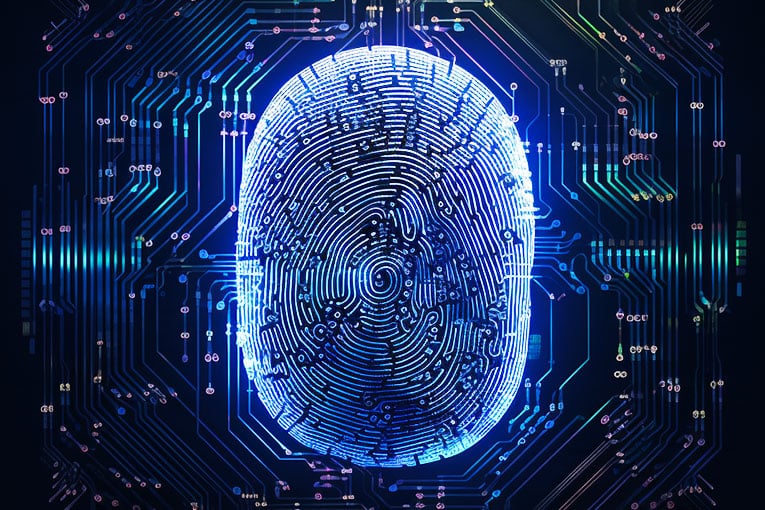
Fingerprint biometrics are highly accurate due to the uniqueness of fingerprint patterns.
Even identical twins have distinct fingerprints.
Additionally, this method is relatively quick and easy to use, making it a popular choice for various applications, from unlocking smartphones to accessing secure facilities.
Fingerprint scanners are also commonly used in airport security to detect known suspects, before they can travel.
Palm vein scanning biometrics operate by using the unique vein patterns within an individual’s palm to establish their identity.
This process involves specialised technology and steps that ensure accurate and secure authentication.
To start, near-infrared light is employed by a palm vein scanning device.
When an individual places their hand over the scanner, the near-infrared light is projected through their palm.
Haemoglobin in the blood within the veins absorbs this light, creating a distinct pattern of veins that is invisible to the naked eye but can be captured by the scanner.
A camera within the scanner captures the reflected light, essentially creating an image of the vein pattern.
This image is then converted into a unique biometric template using advanced algorithms.
This template serves as a digital representation of the individual’s palm vein pattern and is securely stored for future comparisons.
When the person needs to verify their identity, the palm vein scanner captures a new image of their palm.
This image is then transformed into a template for comparison with the stored template.
Similar to fingerprint biometrics, the comparison process assesses the degree of similarity between the templates.
Palm vein scanning is highly accurate because vein patterns are unique to each person and difficult to replicate.
Unlike external features like fingerprints or facial features, vein patterns are located beneath the skin’s surface, making them more challenging to duplicate.
Additionally, the technology is non-intrusive and hygienic since it doesn’t require physical contact with the scanning device.
This biometric method is often used in scenarios where a higher level of security is needed, such as secure facilities or financial transactions.
However, it’s important to acknowledge that, like any biometric system, palm vein scanning has its limitations.
Factors such as changes in lighting conditions or the presence of dirt could potentially affect scanning accuracy.
Finger shape biometrics is a relatively less common but still notable method of identifying individuals based on the unique characteristics of their fingers.
This approach focuses on the overall shape and proportions of an individual’s fingers to establish their identity.
The process begins with the collection of images or scans of an individual’s fingers from various angles.
These images capture the shape, length, width, and other distinguishing features of the fingers.
This biometric data is then processed using specialised algorithms that extract key measurements and features from the finger shape.
These algorithms analyse aspects such as the relative lengths of different finger segments, the curvature of the fingers, the angles between joints, and any distinctive features like scars or deformities.
The extracted data is used to create a digital representation or template of the individual’s finger shape.
Finger shape biometrics offer an interesting approach because finger proportions and shape are relatively stable characteristics.
However, this method may have certain limitations.
For instance, it might not be as accurate as other biometric methods like fingerprints or palm vein scanning, which provide more unique and detailed features.
Additionally, changes due to factors like weight gain, injuries, or ageing could potentially affect the accuracy of finger shape recognition.
While finger shape biometrics may not be as widely used as some other types of biometrics, it still offers a viable option for identity verification in scenarios where higher security is required and multiple biometric factors are used in combination for more robust authentication.
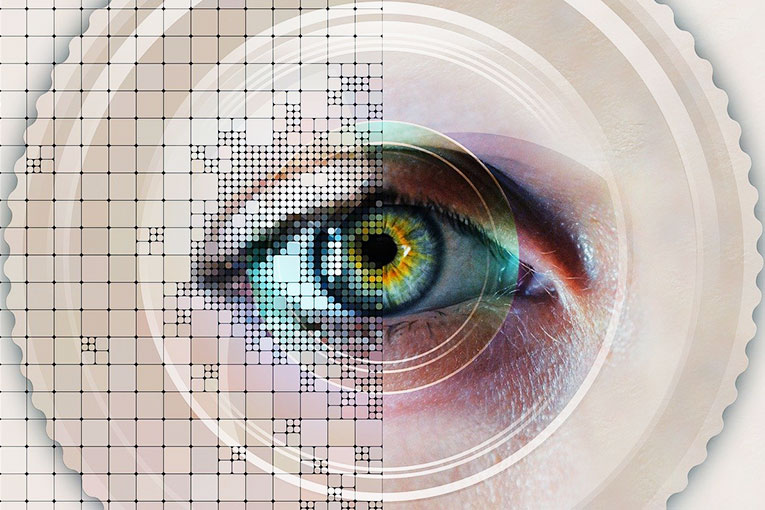
Retina scanning biometrics is an advanced method of identifying individuals based on the unique patterns of blood vessels in their retinas, located at the back of the eye.
This approach leverages the fact that the retinal blood vessel pattern is highly distinct and remains relatively stable over a person’s lifetime.
The process of retina scanning begins with the use of a scanner that emits a low-intensity infrared light into the eye.
This light is harmless and passes through the cornea, reaching the retina.
The blood vessels in the retina absorb the light, creating a distinct pattern of dark lines that corresponds to the unique blood vessel arrangement.
The scanner captures this pattern by detecting the reflected light and creating a detailed digital image of the individual’s retinal blood vessel network.
This image is then converted into a unique biometric template that serves as the person’s identity reference.
Retina scanning is highly accurate because the retinal blood vessel pattern is both intricate and stable.
However, this method requires cooperation from the individual being scanned, as they need to focus on a specific point to align their retina correctly with the scanner.
Despite its accuracy, retina scanning has some limitations.
The equipment used for scanning can be costly and requires precise alignment.
Also, some individuals may find the process uncomfortable due to the close proximity of the scanner to the eye.
Additionally, certain eye conditions or injuries might affect the quality of the captured image.
Retina scanning biometrics is primarily used in high-security environments where accuracy is paramount, in industries such as banking and finance.
Its robustness against forgery and alteration makes it a preferred choice in applications such as secure access control to restricted areas or sensitive data systems.
Iris scanning biometrics is a sophisticated method of identifying individuals based on the unique patterns of their irises, the coloured portion of the eye surrounding the pupil.
This method capitalises on the fact that each person’s iris pattern is highly distinct, even between identical twins.
The process of iris scanning begins with a camera that captures a high-resolution image of the individual’s irises.
The camera uses near-infrared light to illuminate the irises, making it possible to capture intricate details that are not visible to the naked eye.
The captured iris image is then processed to extract specific features, such as the arrangement of furrows, freckles, and other unique characteristics.
These features are used to create a mathematical representation called an iris template, which is a digital code that encapsulates the individual’s iris pattern.
Iris scanning is highly accurate and secure because the complexity of the iris pattern makes it difficult to replicate.
Additionally, the use of near-infrared light ensures that the process is non-intrusive and does not cause discomfort to the individual being scanned.
One notable advantage of iris scanning is its speed and accuracy, as the process takes only a few seconds and can be performed from a reasonable distance.
It also offers a high level of convenience for users, as they do not need to make physical contact with the scanner.
However, there are certain limitations to iris scanning.
Some eye conditions, such as cataracts or irregular pupil shapes, can affect the quality of the captured image.
Also, while it is difficult to replicate the unique iris pattern, sophisticated attacks using high-resolution images or replicas of irises have been demonstrated in controlled environments.
Scleral vein scanning biometrics is an advanced method of identifying individuals based on the unique patterns of blood vessels in the white part of the eye, known as the sclera.
This technique takes advantage of the fact that each person has a distinct pattern of blood vessels in their eyes, similar to fingerprints or irises.
The process of scleral vein scanning involves using a camera or imaging device that emits near-infrared light.
The camera captures the reflected near-infrared light, creating an image of the blood vessels’ patterns in the sclera.
This captured image is then processed and analysed by sophisticated algorithms that identify unique characteristics and features in the vein patterns.
Scleral vein scanning offers several advantages.
The patterns of blood vessels in the sclera are difficult to forge or replicate, providing a high level of security.
The use of near-infrared light ensures a non-intrusive and comfortable experience for the person being scanned.
Additionally, this method can be more reliable than some other biometric methods, as the vein patterns are less affected by factors such as ageing or changes in lighting conditions.
However, there are challenges associated with scleral vein scanning.
The technology requires precise imaging and analysis algorithms, making it complex and potentially costly to implement.
Additionally, some eye conditions or diseases that affect the blood vessels may impact the quality of the captured images.
Scleral vein scanning biometrics is still relatively new and may not be as widely adopted as other biometric methods like fingerprints or facial recognition.
However, ongoing advancements in technology may lead to its increased use in various sectors that require secure and accurate identity verification, over other types of biometrics..
Ear scanning biometrics, also known as ear recognition or earprint authentication, is a method of identifying individuals based on the unique characteristics of their ears.
Just like fingerprints or irises, the shape and features of the ears are distinct for each person, making them a reliable biometric identifier.
The process of ear scanning involves capturing high-resolution images or 3D scans of a person’s ears.
This can be done using cameras, scanners, or even smartphones with advanced imaging capabilities.
The captured images focus on the intricate details of the ear’s structure, including the contours, ridges, and folds.
Ear scanning biometrics offers several advantages.
The shape of the ear is less likely to change over time compared to other biometric features, making it a stable identifier.
It’s also a non-intrusive method that doesn’t require physical contact, making it more hygienic.
Additionally, ear scanning can be used in various scenarios, such as access control or identification at security checkpoints.
However, there are some limitations to consider.
Lighting conditions and the angle at which the ear is presented to the scanner can impact the quality of the captured image.
Also, certain hairstyles or accessories may partially obscure the ear, affecting the accuracy of the scan.
Ear scanning biometrics is a relatively new technology and is not as widely adopted as methods like fingerprints or facial recognition.
It might find its niche in scenarios where other biometric features are not suitable or when a combination of biometric methods is desired for enhanced security.
Facial recognition biometrics is a technology that identifies individuals based on their unique facial features.
It analyses distinct facial characteristics, such as the arrangement of eyes, nose, mouth, and other facial landmarks, to create a digital profile that can be used for identification and authentication.
The process of facial recognition begins with capturing an image or video of a person’s face. This can be done using cameras, smartphones, or other imaging devices.
Facial recognition technology can work with both 2D and 3D images, and it can also take into account various facial expressions and angles.
Some advanced systems even use depth-sensing cameras to create a 3D map of the face for improved accuracy.
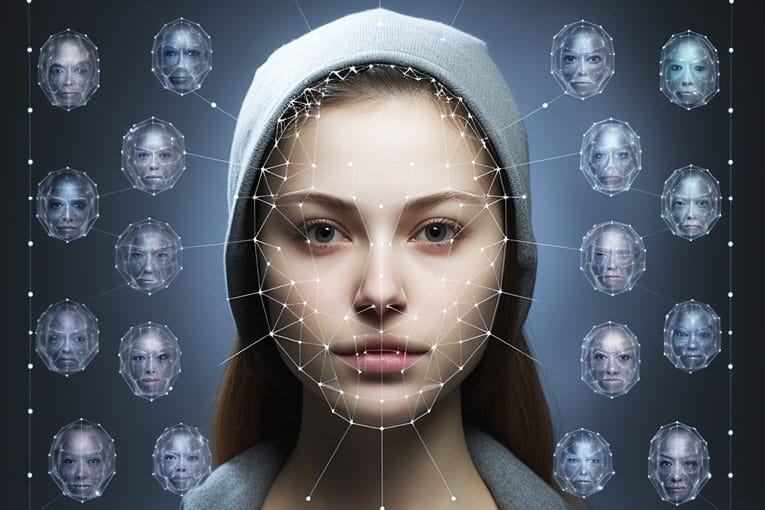
Facial recognition has gained popularity due to its non-intrusive nature – individuals do not need to touch anything or interact physically with a device.
It’s also relatively fast, making it suitable for applications like unlocking smartphones, accessing buildings, or even making payments.
However, there are challenges to consider.
Variations in lighting conditions, facial expressions, and angles can affect the accuracy of recognition.
Some facial recognition systems may struggle with identifying individuals with darker skin tones or different facial features, leading to potential bias.
Additionally, concerns about privacy and security have arisen, as the technology’s widespread police use raises questions about data protection and potential misuse.
Facial recognition technology has applications in various sectors, including security, surveillance, user authentication, and even personalised marketing.
It’s used in law enforcement for identifying suspects, in airports for security checks, and in smartphones for unlocking devices.
As the technology continues to evolve, researchers are working on addressing its limitations, improving accuracy, and ensuring ethical use.
Voice recognition biometrics, also known as voiceprint recognition or speaker recognition, is a technology that identifies individuals based on their unique vocal characteristics.
It involves analysing various vocal features and patterns to create a distinct voiceprint that can be used for authentication.
The process of voice recognition starts with capturing a sample of an individual’s voice. This can be done through various devices, such as smartphones or microphones.
The captured voice sample is then converted into a digital format, which is then analysed by sophisticated algorithms.
These algorithms focus on specific vocal features, including pitch, tone, rhythm, and even unique speech patterns.
They extract these features and convert them into mathematical representations that create a voiceprint – a digital representation of an individual’s voice characteristics.
Voice recognition biometrics has advantages such as being non-intrusive, convenient, and suitable for remote authentication.
Individuals do not need to physically touch anything, making it suitable for various applications like phone banking, customer service interactions, and smart home control.
However, voice recognition does face challenges.
Variations in speech due to factors like illness, emotions, or background noise can affect accuracy.
Additionally, as with other biometric methods, concerns about data privacy compliance arise, especially when storing voiceprints.
To improve the accuracy and reliability of voice recognition, modern systems often use advanced machine learning and artificial intelligence techniques.
These technologies enable the system to adapt and learn from different vocal variations and patterns over time, enhancing the system’s ability to accurately identify individuals.
Voice recognition technology is applied in various sectors, including telecommunications, security, and customer service.
It’s used for tasks like unlocking smartphones, accessing secure systems, verifying identity during phone transactions, and even monitoring for voice-based security breaches.
While voice recognition has made significant strides in recent years, ongoing research and development continue to refine its capabilities, address challenges, and ensure that it remains a secure and effective biometric authentication method in the ever-evolving technological landscape of different types of biometrics.
Scent recognition biometrics, also known as olfactory biometrics or smell-based authentication, is a unique and emerging form of biometric identification that uses an individual’s distinct scent profile for authentication purposes.
The process of scent recognition begins by capturing a person’s scent sample, often in the form of a breath, body odour, or other bodily emissions.
This sample is then analysed to extract specific chemical compounds that contribute to an individual’s unique scent signature.
Advanced sensors and analytical techniques are employed to identify and quantify these chemical compounds.
These compounds are then converted into a digital scent profile that serves as a biometric template for that individual.
Scent recognition biometrics is an intriguing concept with potential applications in various fields.
It has been explored for security purposes, access control, and even healthcare.
However, there are several challenges to overcome in implementing scent recognition.
One of the main challenges is the ability to capture and analyse scent samples accurately and reliably.
Scents can be affected by factors such as diet, health conditions, and environmental influences, making it challenging to create consistent and stable scent profiles.
Additionally, there are concerns related to privacy and cultural sensitivities.
Some individuals might find the idea of sharing their scent data uncomfortable or invasive, raising ethical questions about consent and data usage.
Due to these challenges, scent recognition biometrics is still in its early stages of development.
Research is ongoing to improve the accuracy and reliability of scent analysis, as well as to address the privacy and ethical concerns associated with this technology.
While scent recognition is a fascinating concept, it’s important to note that it is not as widely used or established as other biometric methods like fingerprints or facial recognition.
As the technology evolves and matures, it may find niche applications where scent-based authentication offers unique advantages, but widespread adoption and implementation may take more time and research.
Heartbeat recognition biometrics, also known as cardiac biometrics or heart-based authentication, is an innovative method of identifying individuals based on the unique characteristics of their heartbeat patterns.
The process of heartbeat recognition begins with the acquisition of an individual’s heartbeat signal.
This is usually done using sensors that can detect subtle variations in the electrical activity of the heart, such as electrocardiogram (ECG) sensors or photoplethysmogram (PPG) sensors.
These sensors are typically integrated into wearable devices or specialised equipment.
The acquired heartbeat signal is then processed to extract distinctive features that are unique to each individual’s heart rhythm.
These features could include the intervals between specific points in the ECG waveform or the timing of certain peaks and troughs in the heartbeat pattern.
Heartbeat recognition offers several advantages as a biometric method.
Unlike some other biometrics, such as fingerprints or facial features, heartbeat patterns are not easily alterable or impersonable, making them highly secure.
Additionally, this method doesn’t require physical contact with the sensor, which can enhance user comfort and hygiene.
However, there are challenges to consider.
Heartbeat patterns can be influenced by factors like physical activity, stress, and health conditions, which can lead to variations in the signal.
As a result, the system needs to account for these variations to ensure accurate authentication.
Furthermore, implementing heartbeat recognition requires specialised hardware, which may limit its accessibility compared to more commonly used types of biometrics.
DNA matching biometrics is a highly advanced and accurate method of identifying individuals based on their unique DNA profiles.
DNA is the genetic material present in every cell of the human body, carrying individual genetic information.
The process of DNA matching begins with obtaining a sample of an individual’s DNA.
This is typically collected from sources like saliva, blood, hair follicles, or cheek swabs.
The DNA sample contains sequences of nucleotides that are specific to each person.
The collected DNA sample is then subjected to a process called DNA profiling, also known as DNA fingerprinting or genetic fingerprinting.
In DNA profiling, specific regions of the DNA known as short tandem repeats (STRs) are analysed.
These are short sequences of nucleotides that are repeated in a specific pattern. The number of repeats in each STR can vary between individuals, making it highly unique.
DNA matching is considered one of the most accurate forms of biometric identification, as the probability of two unrelated individuals having the same DNA profile is extremely low.
However, there are challenges and limitations to consider. Collecting and processing DNA samples require specialised equipment and expertise, which may limit its practicality for everyday authentication purposes.
DNA samples can also be more intrusive to collect compared to other types of biometrics.
Behavioural biometrics refer to the study and analysis of an individual’s unique behavioural patterns and habits as a means of identification and authentication.
Unlike physical biometrics that rely on distinct physical characteristics like fingerprints or iris patterns, behavioural biometrics focus on how a person interacts with devices, systems, and their environment.
Behavioural biometrics encompass various aspects of human behaviour, including the way individuals type, swipe, click, walk, or even interact with touchscreens.
These behaviours are unique to each person and can be used to create a behavioural profile for authentication purposes.
Behavioural biometrics may still be their infancy when compared to other types of biometrics, but they are still a fascinating area of technology.
Keystroke recognition is a behavioural biometric method that analyses an individual’s typing patterns on a keyboard to identify and authenticate them.
Every person has a unique way of typing, including variations in key press duration, intervals between key presses, and typing rhythm.
Keystroke recognition leverages these distinct typing behaviours to create a biometric profile that can be used for authentication purposes.
Keystroke recognition offers several advantages.
It is a non-intrusive method that doesn’t require specialised hardware, making it suitable for online authentication.
It can also provide a continuous authentication process, enhancing security during user interactions.
However, keystroke recognition can be influenced by factors such as typing context, keyboard layout, and variations due to user fatigue or distractions.
Therefore, it’s important to consider these factors when designing and implementing a keystroke recognition system.
This method of biometric authentication is often used in conjunction with other authentication methods to create a multi-factor authentication system that adds an extra layer of security to sensitive systems and data.
Gait scanning is a behavioural biometric method that focuses on the unique way an individual walks or moves.
Just like other biometric traits, every person has a distinct walking pattern, which is influenced by factors such as body structure, weight distribution, and personal habits.
Gait scanning analyses these patterns to create a biometric profile for identification and authentication purposes.
Gait scanning offers the advantage of being non-intrusive and not requiring direct physical contact or special equipment.
It’s a particularly useful biometric method for scenarios where traditional biometric traits like fingerprints or facial features might not be readily available, such as long-range identification or in situations where the person is not cooperating (like in surveillance footage).
However, there are challenges associated with gait scanning.
Factors like footwear, clothing, walking surface, and carrying objects can influence the gait pattern, potentially affecting the accuracy of the identification process.
Also, gait can change over time due to factors such as injury, health conditions, or even mood, which could impact the reliability of the biometric system.
Despite these challenges, gait scanning is an intriguing and evolving field in biometrics, with potential applications in security and surveillance, access control, and health monitoring.
As technology continues to advance, gait scanning methods are becoming more accurate and reliable, offering a unique and innovative approach to biometric identification and authentication.
In a world where securing digital interactions is of paramount importance, biometrics offer a groundbreaking solution.
Whether it’s the contours of our fingers or the rhythm of our gait, biometrics provide an intricate and reliable means of authentication.
Physical biometrics, such as fingerprints and iris scanning, capitalise on unique physiological traits, while behavioural biometrics, like keystroke recognition, tap into individual behaviour patterns.
These biometric methods are transforming the landscape of security, safeguarding sensitive information in a way that was once unimaginable.
By understanding the diverse types of biometrics and their workings, we gain insight into the future of authentication, where each individual’s distinct traits form the key to unlocking a secure digital world.